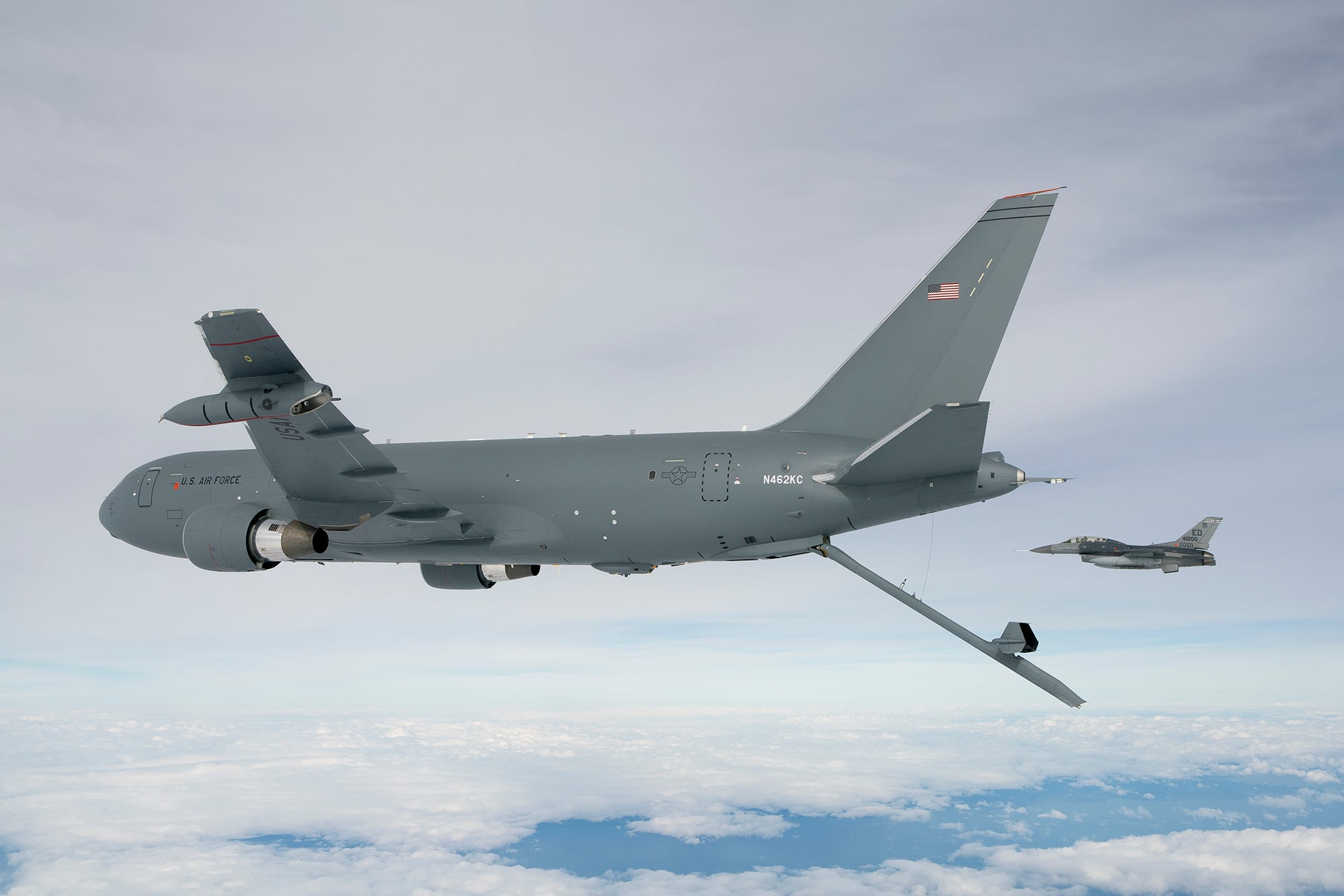NATIONAL HARBOR, Md. — The Air Force's future KC-Z tanker could usher in a massive technological leap forward, with autonomy, low observability and flying wing designs possibly playing a role in the program.
As enemy air defenses improve, the Air Force may need a penetrating aerial refueling tanker that can move forward in conjunction with stealthy fifth-generation aircraft like the F-22 and F-35, Air Mobility Command head Gen. Carlton Everhart told reporters Tuesday.
A study, slated to begin this year, will help the service decide the path forward, but Everhart said officials likely will skip past a KC-Y competition, either folding in modifications to the KC-46A or directly transitioning to the KC-Z.
"Once that study is done, then we'll start programming, and we're looking around the 2030 to 2035 area in the budget where it gains us the opportunity to be able to procure a new follow-on tanker," he said during a round-table discussion at the Air Force Association conference.
Today, the Air Force conducts aerial refueling using large airplanes — usually derived from commercial passenger jets — that fill up smaller craft while far away from enemy activity. That might not be the most effective way to conduct the mission in the future, Everhart said.
"We have been aerial refueling basically the same way since it was invented. You drop the hose or you drop the boom and you refuel that way. What we’re looking at is autonomy. Is that the right question?" he said.
"What does that tanker look like? Is it a big airplane like we have now? Is it a tube with wings? Is it radar absorbing?" he said. "Can we have one person in the cockpit, and not two pilots? What does that look like? Those are the questions that we’re getting after."
AMC is working closely with the Air Force research labs and is especially relying on industry in gathering information on fledgling or existing technologies that could enable a tanker to operate in more challenging environments. In October, the command is set to host its first industry day since 2009.
A KC-Z will likely need to accompany fighter jets and other assets into anti-access, area-denial battlespaces, which means it could incorporate low-observable features. Everhart said he had challenged industry to create a "cloaking device" that would disguise the aircraft’s radar signature and make the tanker appear like a much smaller object.
The KC-Z could also utilize a flying wing or blended wing design to reduce radar reflection.
"Frankly, I really love that style," Everhart said. "We’re just at the tip of the iceberg on what’s out there that we can apply to big airplanes."
Another capability the service is interested in is autonomy, which could make the refueling process easier for operators or decrease crew size, he said.
Besides providing clarity on the kinds of technologies the service needs in a KC-Z, officials also are pondering how many tankers will be needed in the future, as the existing KC-10 and KC-135s are retired, he said. The Air Force plans to buy 179 KC-46As in its current program of record, but the service is going to need more than that to meet its requirements.
"I know that I need to meet wartime requirements, and that’s the number I will drive to," he said, adding he didn’t know whether the majority should be KC-Zs or KC-46. "Things change, and we want to look at our adversary and say, ‘What capability do they bring on, and how do we go against that?’"
Valerie Insinna is Defense News' air warfare reporter. She previously worked the Navy/congressional beats for Defense Daily, which followed almost three years as a staff writer for National Defense Magazine. Prior to that, she worked as an editorial assistant for the Tokyo Shimbun’s Washington bureau.





